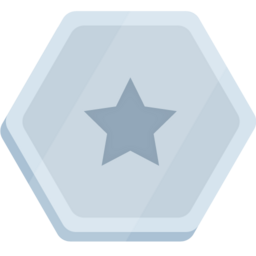Chi-Jung Chung
Учасник із 2024
Срібна ліга
Кількість балів: 12805
Учасник із 2024

The Google Cloud Computing Foundations courses are for individuals with little to no background or experience in cloud computing. They provide an overview of concepts central to cloud basics, big data, and machine learning, and where and how Google Cloud fits in. By the end of the series of courses, learners will be able to articulate these concepts and demonstrate some hands-on skills. The courses should be completed in the following order: 1. Google Cloud Computing Foundations: Cloud Computing Fundamentals 2. Google Cloud Computing Foundations: Infrastructure in Google Cloud 3. Google Cloud Computing Foundations: Networking and Security in Google Cloud 4. Google Cloud Computing Foundations: Data, ML, and AI in Google Cloud This final course in the series reviews managed big data services, machine learning and its value, and how to demonstrate your skill set in Google Cloud further by earning Skill Badges.
The Google Cloud Computing Foundations courses are for individuals with little to no background or experience in cloud computing. They provide an overview of concepts central to cloud basics, big data, and machine learning, and where and how Google Cloud fits in. By the end of the series of courses, learners will be able to articulate these concepts and demonstrate some hands-on skills. The courses should be completed in the following order: 1. Google Cloud Computing Foundations: Cloud Computing Fundamentals 2. Google Cloud Computing Foundations: Infrastructure in Google Cloud 3. Google Cloud Computing Foundations: Networking and Security in Google Cloud 4. Google Cloud Computing Foundations: Data, ML, and AI in Google Cloud This third course covers cloud automation and management tools and building secure networks.
The Google Cloud Computing Foundations courses are for individuals with little to no background or experience in cloud computing. They provide an overview of concepts central to cloud basics, big data, and machine learning, and where and how Google Cloud fits in. By the end of the series of courses, learners will be able to articulate these concepts and demonstrate some hands-on skills. The courses should be completed in the following order: 1. Google Cloud Computing Foundations: Cloud Computing Fundamentals 2. Google Cloud Computing Foundations: Infrastructure in Google Cloud 3. Google Cloud Computing Foundations: Networking and Security in Google Cloud 4. Google Cloud Computing Foundations: Data, ML, and AI in Google Cloud
The Google Cloud Computing Foundations courses are for individuals with little to no background or experience in cloud computing. They provide an overview of concepts central to cloud basics, big data, and machine learning, and where and how Google Cloud fits in. By the end of the series of courses, learners will be able to articulate these concepts and demonstrate some hands-on skills. The courses should be completed in the following order: 1. Google Cloud Computing Foundations: Cloud Computing Fundamentals 2. Google Cloud Computing Foundations: Infrastructure in Google Cloud 3. Google Cloud Computing Foundations: Networking and Security in Google Cloud 4. Google Cloud Computing Foundations: Data, ML, and AI in Google Cloud This first course provides an overview of cloud computing, ways to use Google Cloud, and different compute options.
This short course on integrating applications with Gemini 1.0 Pro models on Google Cloud helps you discover the Gemini API and its generative AI models. The course teaches you how to access the Gemini 1.0 Pro and Gemini 1.0 Pro Vision models from code. It lets you test the capabilities of the models with text, image, and video prompts from an app.
The Generative AI Explorer - Vertex Quest is a collection of labs on how to use Generative AI on Google Cloud. Through the labs, you will learn about how to use the models in the Vertex AI PaLM API family, including text-bison, chat-bison, and textembedding-gecko. You will also learn about prompt design, best practices, and how it can be used for ideation, text classification, text extraction, text summarization, and more. You will also learn how to tune a foundation model by training it via Vertex AI custom training and deploy it to a Vertex AI endpoint.
This course introduces diffusion models, a family of machine learning models that recently showed promise in the image generation space. Diffusion models draw inspiration from physics, specifically thermodynamics. Within the last few years, diffusion models became popular in both research and industry. Diffusion models underpin many state-of-the-art image generation models and tools on Google Cloud. This course introduces you to the theory behind diffusion models and how to train and deploy them on Vertex AI.
This course introduces Vertex AI Studio, a tool to interact with generative AI models, prototype business ideas, and launch them into production. Through an immersive use case, engaging lessons, and a hands-on lab, you’ll explore the prompt-to-product lifecycle and learn how to leverage Vertex AI Studio for Gemini multimodal applications, prompt design, prompt engineering, and model tuning. The aim is to enable you to unlock the potential of gen AI in your projects with Vertex AI Studio.
Це ознайомлювальний курс мікронавчання, який має пояснити, що таке відповідальне використання штучного інтелекту, чому воно важливе і як компанія Google реалізує його у своїх продуктах. Крім того, у цьому курсі викладено 7 принципів Google щодо штучного інтелекту.
У цьому ознайомлювальному курсі мікронавчання ви дізнаєтеся, що таке великі мовні моделі, де вони використовуються і як підвищити їх ефективність коригуванням запитів. Він також охоплює інструменти Google, які допоможуть вам створювати власні додатки на основі генеративного штучного інтелекту.
Це ознайомлювальний курс мікронавчання, який має пояснити, що таке генеративний штучний інтелект, як він використовується й чим відрізняється від традиційних методів машинного навчання. Він також охоплює інструменти Google, які допоможуть вам створювати власні додатки на основі генеративного штучногоінтелекту.